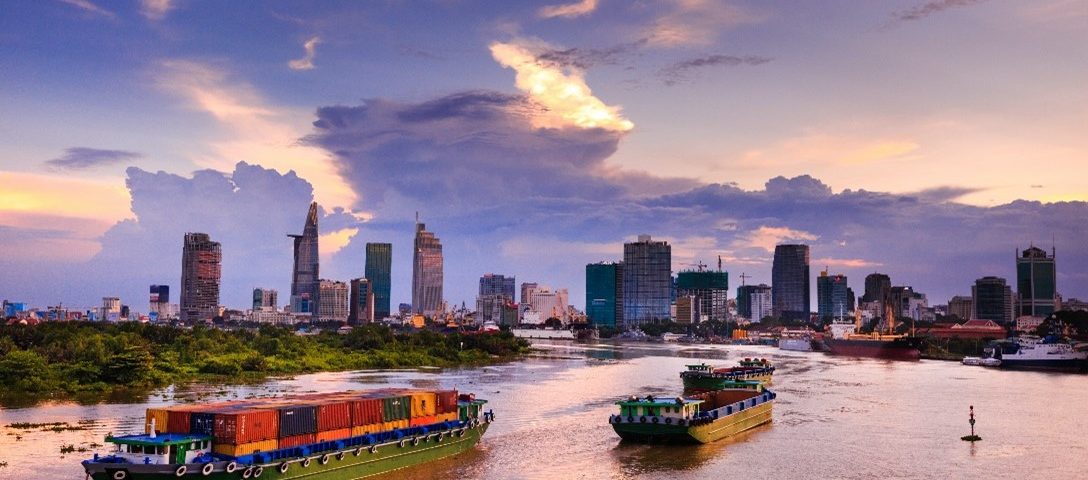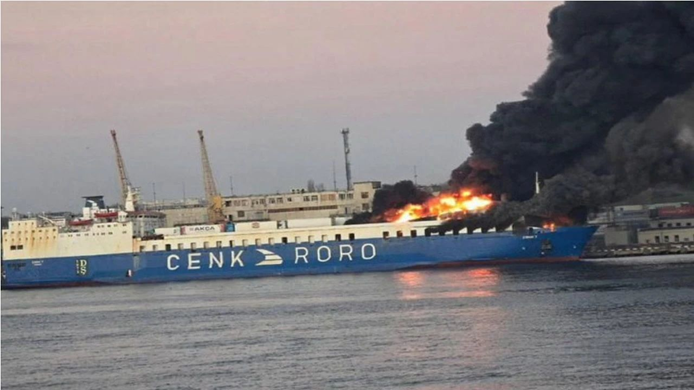
Clarkson Research’s six monthly outlook for the shipping markets, Shipping Review & Outlook, has today been released and is available on Shipping Intelligence Network.
Summarising the review, Steve Gordon, Managing Director of Clarksons Research commented:
Although our overall market “barometer”, the ClarkSea day rate index, has eased back in the past six months, it remains at an extremely robust $29,000/day in late March (10yr average: $16,000/day) with a particularly strong position across “energy” related shipping , a now “normalised” container market and generally positive sentiment despite “vulnerabilities” in the global economy.
Impacted by the economic headwinds (e.g. inflation, escalating interest rates, slow Chinese growth) that we profiled in our report six months ago, seaborne trade fell 0.5% in 2022 to 11.9bt. While some of the negative data points had begun to moderate in early 2023 (e.g. we estimate global trade returned to 1% y-o-y growth in Q1) the world economy retains vulnerabilities (e.g. recent concerning banking sector problems). For the moment we are projecting trade will reach 12.1bt in 2023 and 12.5bt in 2024. The divergence between energy-related trade (2022: +4%, 2023: +3%) and non-energy trade (2022: -3%, 2023:+1%) continues, although there is now more optimism around increasing Chinese economic activity, traditionally a good signal for dry bulk. The redistribution of oil flows in response to the Ukraine conflict has introduced a fundamental distance “kicker” for shipping demand: this year we project crude tanker demand to grow by 3% by volume and 7% by tonne miles (oil products even more dramatic 4% vs 11%). Port congestion has generally unwound to pre-Covid levels.
Containers aside, market sentiment across the shipping segments is positive. With recovering trade and a shift to longer haul combining with low fleet growth (orderbook just 4% of fleet) and operational complexities (sanctions, a “dark” fleet possibly 10% of capacity), Tankers are in very strong territory with a positive outlook. The LPG market has performed better than expected (US exports / Panama congestion helping) but “keep an eye” on the newbuilding program for VLGCs. In LNG (650mt of trade by 2030?) term rates remain strong and we expect the newbuild order run to continue this year (another 100 orders; will there be a window when the ships come before the projects?) with a focus on energy transition and energy security. Offshore oil and gas vessel markets are improving (to 9-year highs) and offshore wind grows rapidly. Car carrier rates have surged to record highs on congestion, long-haul demand and electric vehicle volumes. Cruise and ferry activity continues to rebound, approaching pre-Covid levels. Bulkcarrier rates are now improving after the impacts of demand weakness, seasonal trends and reduced congestion, with a low orderbook (6% of fleet) and a (hopefully) improving Chinese economy. In sharp contrast to a year ago, container markets have corrected (freight down 80% vs start-22, 10% below pre-Covid, charter rates down 80% but showing some resilience, still above 2019), and our supply (2023: +7%) / demand (2023: -1%) projections suggest this market is yet to “bottom out”.
Shipping’s supply side generally remains “encouraging”. The overall orderbook is close to historical lows (10% of fleet vs >50% in 2008), and shipyard capacity, though now increasing slightly with some reactivations reported, is 40% below the peak (133 active “large” yards vs 320 in 2009). Yards are generally fully booked for 3 years and the delivery program is dominated by container (29% of fleet on order) and LNG (49% vs 31% “steam” ships). We project fleet growth of just 2.5% in 2023 and ~1% in 2024 (significant expansion in container/gas, minimal in tanker/bulkers). Despite an ageing fleet and renewal needs, recycling has been low. With limited yard availability and high newbuild prices, owners have been active in S&P (and in early debt repayments). Tanker pricing is up 51% on start-22 (bulkers: down 6% now increasing again, containers down 52%).
Shipping is 2.3% of global CO2 (we estimate volumes and the global share will trend down to 2.1% in 2023), with the entry into force of the IMO’s EEXI and CII a major milestone in shipping’s decarbonisation pathway (along with the EU ETS from 2024). The market impacts are complex and uncertain but there is potential for market upside volatility and increasingly ‘tiered’ charter and S&P markets; supply impacts may include slow steaming, EST retrofitting, and increased (and potentially uneven) fleet renewal (29% of the fleet is now 15+ years old). ‘Eco’ ships are 30% of fleet capacity, with >25% EST fitted. Alternative fuel ships have accounted for ~60% of new orders since start-22 in GT (mainly LNG, increasing interest in methanol), and now account for 5% of fleet GT and 47% of orderbook. Longer term, Energy Transition will impact trade (as will geo-politics).
As shipping continues to manage the huge complexities generated by the unprecedented global events of recent years, record levels of cash are flowing into the industry. Containers aside, market sentiment is positive with short term visibility on shipping supply and potential medium term supply side limitations from yard capacity (but watch for reactivation) and emissions regulations (watch for speed trends). The global economy retains vulnerabilities and risks but, for the moment, these are being mitigated by trends that are supportive for shipping including redistribution of oil flows and China’s ‘re-opening’.
Shipping Intelligence Network (SIN) is Clarkson Research’s market leading digital platform and the most comprehensive source of data on shipping and trade. The system provides immediate access to uniquely powerful data and analysis tracking and projecting market supply / demand, freight, vessel earnings, vessel values and macro-economic data around trade flows and global economic developments.
Source: https://www.hellenicshippingnews.com/clarkson-research-positive-sentiment-in-most-shipping-segments/
Image Source: https://www.pexels.com/
4.04.2023


